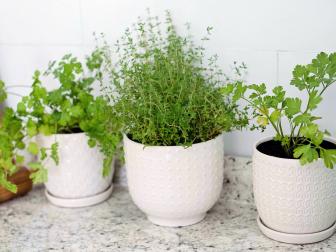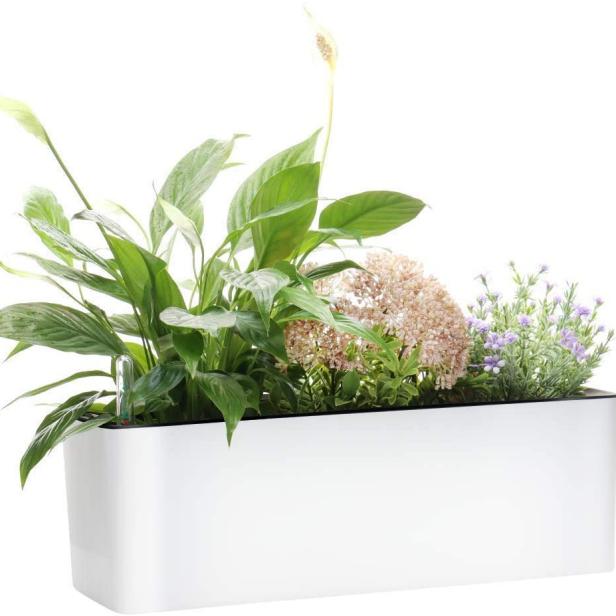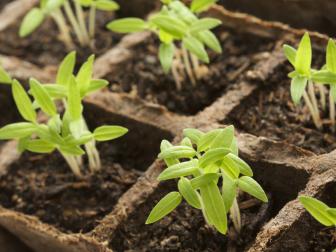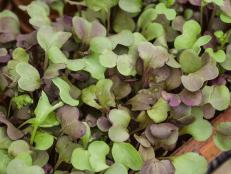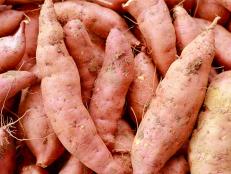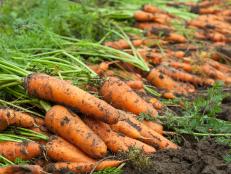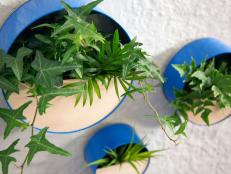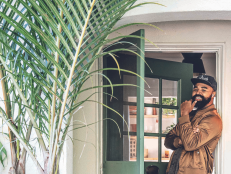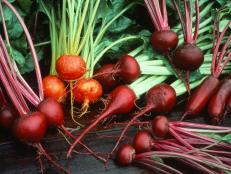The Best Veggies and Herbs to Grow Indoors
A robust vegetable garden can be grown indoors all year long. Find out what edibles thrive indoors and get tips on planting, as well as finding the right space and lighting.


SHAIN RIEVLEY
Don’t let winter or your lack of outdoor space hold you back from growing fresh vegetables and herbs. Root vegetables like carrots, beets and radishes, as well as greens like spinach, Swiss chard and lettuces, can all be grown indoors. Growing fresh herbs such as parsley, cilantro, oregano, mint and thyme can help elevate your cooking and add some charm to your kitchen decor. Read on to find more tips on growing vegetables and herbs inside your home.
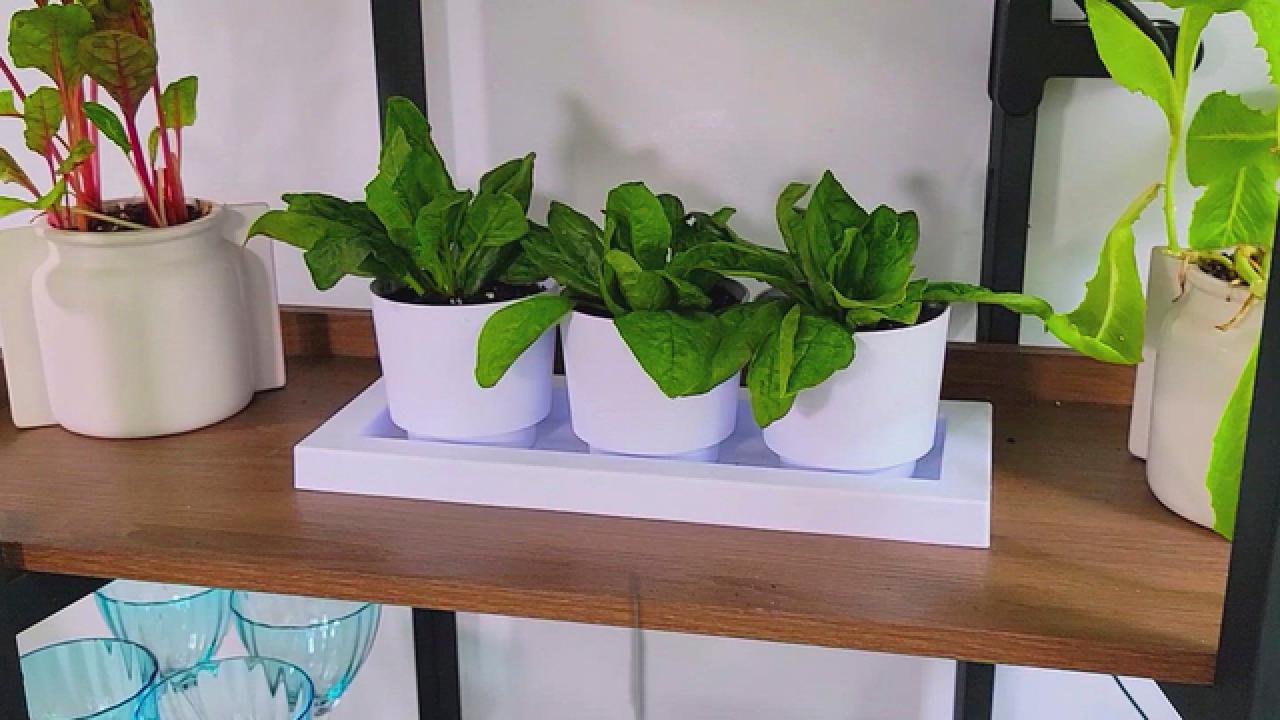
Use Smaller Plant Varieties
Space is often the biggest issue when it comes to growing vegetables indoors. Fast-growing leafy greens like arugula, kale, Swiss chard, spinach, bibb lettuce and microgreens are a great option because they don’t need a lot of space and can continually be harvested so they can be kept compact. If you have more space, consider growing root vegetables.
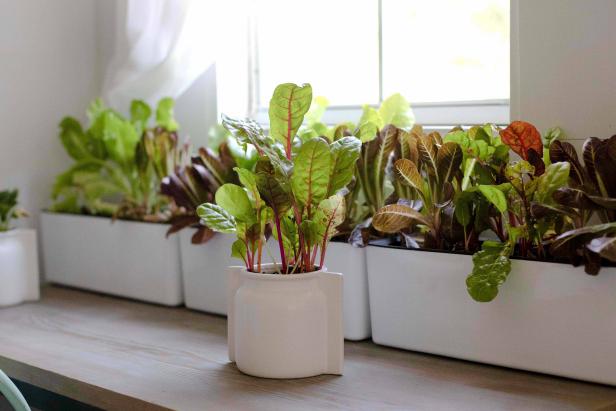
SHAIN RIEVLEY
Try Microgreens for Mini Bursts of Flavor
Perfect for space-challenged indoor gardens, microgreens are simply baby versions of your favorite plants. Common greens such as mustard, kale and beets, as well as peas, chives and broccoli, are tasty and packed with nutrients when they are seedling size. You can grow microgreens from standard seeds or purchase seeds specially made for growing micro size. Microgreens need to be sowed frequently, so seeds sold for microgreens will come in larger quantities than seeds meant for outdoor gardens. Growing microgreens is fast and easy. They are usually ready to harvest in about a week or two. You don’t need a lot of room or special containers; small, shallow pots a couple of inches deep will work great. You can buy special-made planters for microgreens, or watch this video on how to grow microgreens in a recycled plastic party tray from the supermarket. Be sure to use a seed-starting potting mix, give your microgreens plenty of sunlight and water frequently. Microgreens are used more as a condiment than a main dish. Sprinkle them over to salads, omelets and stir-fry dishes.
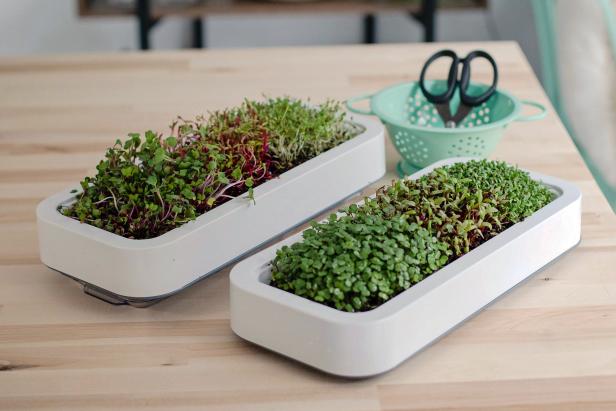
SHAIN RIEVLEY
Find the Right Conditions for Herbs
Growing herbs indoors year-round has become commonplace because most herbs can be grown in small spaces and are low maintenance. Perennial herbs like rosemary, thyme, mint and oregano can tolerate some cold, so they'll be OK near a drafty window or door as long as they get plenty of sunlight. On the other hand, heat-loving annual herbs such as sage, basil, lemongrass and dill need to be shielded from winter drafts and require lots of direct sunlight, so a grow light may be necessary in winter. Cilantro, tarragon and chives are somewhere in the middle. They can thrive with a mix of direct and indirect light, and can tolerate a slight chill. If the conditions are right, keeping fresh herbs in the kitchen is a no-brainer, but fragrant herbs like peppermint, lavender, rosemary or lemon balm can add a touch of aromatherapy to any space. Thyme, oregano and mint trail down, so they look great in hanging planters. You may have to move your herbs around your home until you find the perfect spot for them to thrive.
13 Easy Herbs to Grow Indoors 14 Photos
Growing herbs indoors for year-round use is fun, gratifying and easy.
Grow Root Veggies in Large Pots
Carrots, beets, onions, garlic and radishes can be grown indoors. Planting these beauties is not just about what grows below the dirt, their green tops (on some plants they're called scapes) are tasty in salads, sauteed and in pesto mixes. Look for smaller varieties, often called compact, petite or dwarf. Sow the seeds directly into large, deep pots so they have plenty of room to grow down as well as up. Standard potting soil will suffice. Also, using large pots means they’ll dry out slower; remember container gardens need more water than in-ground gardens. Re-sow after harvest to keep the supply going all year long.

SHAIN RIEVLEY
Let There Be Light, Lots of It
Most herbs and veggies need at least six hours of direct sunlight per day in order to thrive. Even if your home gets a lot of natural light, you likely won’t get sufficient sunlight to keep all of your indoor plants happy, especially during winter. So they'll either need a south-facing window where they'll get several hours of direct sunlight or supplemental grow lights. Adding a timer to a grow light is a great way to ensure that your plants get adequate light.
How to Choose the Best Indoor Lighting for Plants
Whether it's for your full-grown houseplants or starter seedlings, check out these grow light options for your indoor plants.
Use the Right Soil
If you're growing your herbs and veggies from seed, make sure to start with a potting mix made specifically for seed starting. If transplanting a purchased vegetable plant, potting soil will do the trick.

SHAIN RIEVLEY
Make a Plan to Hydrate
Some indoor plants can be very particular about how much water they need. Factors like the amount of light, temperature and humidity can affect how much and how often you'll need to water your plants. If your plants need frequent watering or you're worried about over or under watering, try a self-watering planter or hydroponic growing kit.
This planter box works for houseplants, herbs and flowers. It can be used indoor or outside. It measures 5.5" x 16" planter can store enough water for a week or more. Four coconut coir disks are included.
How to Start Seeds Indoors
Starting seeds indoors in winter helps you get a jump on your spring and summer gardening goals. Seed starting may also save you money in the long run, and, no matter your age, it’s a great way to learn about how plants grow.






